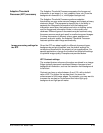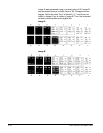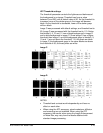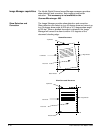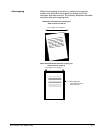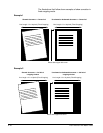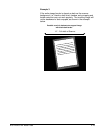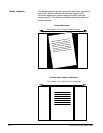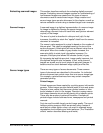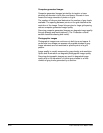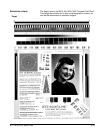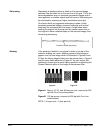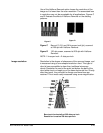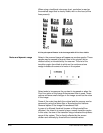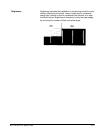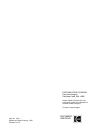
A-61122/A-61124 March 1999 E-21
Evaluating scanned images
This section describes methods for evaluating digitally scanned
images. Evaluating scanned images requires an understanding of
how scanned images are created and the types of source
documents used to create these images. Image creation and
source image types are also discussed in this chapter, as well as
various evaluation criteria using a standard target as an example.
Scanned images
A scanned image is a digitized representation of a source image.
An image is digitized by viewing the source image and
determining a numeric value for each finite area (picture element
or pixel) of that image.
The size of a pixel is described in dots-per-inch (dpi). As dpi
increases, the ability to retain fine "spatial" detail from the source
document is increased.
The numeric value assigned to a pixel is based on the number of
bits-per-pixel. This value is assigned based on the tone of the
source document. A black pixel will have a different value than a
white pixel. When the number of gray shades increase, the
scanner’s ability to retain tonal information increases. For
example, 8 bits-per-pixel allows 256 shades (levels) of gray.
By increasing dpi and bits-per-pixel, image quality improves, but
the digitized image file size increases. In fact, most scanned
images are stored as a bi-tonal (single bit-per-pixel) images. A
balance must be struck between image quality and file size.
Source image types
There are many types of source documents. Three common
types of documents are described in this section. An individual
source document can contain more than one source image type.
For example, a printed business form may contain computer-
generated printing.
Printed Images
Printed images are those created by a printing press, ink-transfer
process. These images contain discrete levels of tone and space.
Discrete in tone means that there are a limited number of tone
levels (shades of color) in the images. Discrete in space means
that image elements are printed by placing ink at specific points.
These may be random or patterned locations. Examples of
printed images include business forms, newspapers and printed
manuals.
Font size and line width largely control image quality. The use of
halftone printing screens, which are printed using a series of
small dots to create lighter colors, can result in scanned image
degradation due to aliasing and moiré patterns. (The “Evaluation
criteria” section describes aliasing and moiré).



